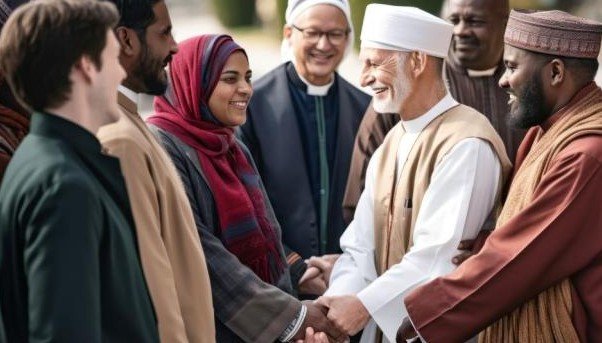Jordan recently held a major event to celebrate the 60th anniversary of Nostra Aetate, a key Vatican document on interreligious relations. The symposium, organized by the Catholic Center for Studies and Media and the American University of Madaba, took place on October 20, 2025, and drew religious leaders, officials, and students to discuss dialogue and peace in the Middle East.
Event Highlights and Attendees
The gathering in Madaba brought together a diverse group of participants, including Cardinal Pierbattista Pizzaballa, the Latin Patriarch of Jerusalem, and Imam Ahmad Al-Khalayleh from the Hashemite Royal Court. Other notable attendees included local bishops, priests, nuns, Islamic clerics, and government figures like Madaba Governor Hassan Al-Jbour.
This event underscored Jordan’s role as a hub for interfaith efforts. Students from the American University of Madaba also joined, adding a youthful perspective to the discussions. The symposium focused on how Nostra Aetate has shaped relations between Christians and Muslims over the past six decades.
Organizers aimed to not just look back but to inspire future actions. Recent global tensions, including conflicts in the region, made the timing especially relevant.

Key Speeches and Messages
Cardinal Pizzaballa delivered a keynote address, praising Jordan’s leadership under King Abdullah II in promoting dialogue. He highlighted initiatives like the Amman Message and World Interfaith Harmony Week as real-world examples of Nostra Aetate’s principles.
The cardinal stressed that interreligious dialogue is essential for stability, calling it a pilgrimage toward hope. He noted the need to educate younger generations and build trust amid ongoing challenges like the war in Gaza.
Imam Al-Khalayleh echoed these sentiments, emphasizing mutual respect and shared faith in one God. Father Rif’at Bader, director of the Catholic Center, spoke about Jordan’s history of cooperation since the 1980s and hoped the event would foster new generations committed to peace.
University President Mamoun Akroush added that hosting the symposium reflects a commitment to bridging cultures in a world facing divisions.
Historical Context of Nostra Aetate
Nostra Aetate, issued in 1965 during the Second Vatican Council, marked a turning point for the Catholic Church’s approach to other religions. It rejected anti-Semitism and encouraged respect for non-Christian faiths, opening doors for global interfaith work.
In the Middle East, the document’s impact has been profound, influencing local efforts to promote harmony. Jordan has led with programs that align with its messages, such as protecting religious sites and hosting international forums.
Over the years, this has helped build stronger ties between communities. Recent data from interfaith organizations shows a rise in joint initiatives, with over 50 major events worldwide in 2025 alone celebrating the anniversary.
Global Celebrations and Broader Impact
Similar events have popped up around the world this year. In Miami, St. Thomas University and the Archdiocese hosted an interfaith panel with the American Jewish Committee. Georgetown University in Washington also held discussions on Jewish-Catholic relations.
In Asia, groups in India and elsewhere reflected on Nostra Aetate’s call for unity. The Vatican even greeted Hindus ahead of Diwali, linking the anniversary to broader peace efforts.
These gatherings highlight a trend: interreligious dialogue is gaining momentum amid rising global conflicts. A 2025 report from the United Nations notes that such initiatives have reduced community tensions in several regions by up to 20 percent.
Here are some key global initiatives inspired by Nostra Aetate:
- The Amman Message, launched in 2004, which clarified Islamic teachings on tolerance.
- A Common Word, a 2007 Muslim-Christian dialogue effort.
- World Interfaith Harmony Week, established by the UN in 2010.
Challenges and Future Directions
Despite progress, challenges remain. Conflicts in the Middle East, including recent escalations, test the limits of dialogue. Speakers at the Jordan event pointed out the need for more education to counter divisions.
Looking ahead, experts suggest integrating interfaith studies into school curriculums. Jordan plans to expand its programs, potentially hosting more annual events.
A table below outlines a timeline of major milestones related to Nostra Aetate and interfaith dialogue:
| Year | Milestone | Description |
|---|---|---|
| 1965 | Nostra Aetate Issued | Vatican document promotes respect for non-Christian religions. |
| 2004 | Amman Message | Jordan’s initiative on Islamic unity and tolerance. |
| 2007 | A Common Word | Open letter from Muslim leaders to Christians for dialogue. |
| 2010 | UN Harmony Week | Annual event inspired by Jordan to foster interfaith understanding. |
| 2025 | Global Anniversaries | Symposia in Jordan, US, and elsewhere mark 60 years. |
Why This Matters Today
In a time of uncertainty, events like this symposium remind us of the power of conversation. They address real-world issues, from regional wars to cultural misunderstandings, by promoting shared values.
Jordan’s efforts position it as a model for others. With ongoing global challenges, including climate change and migration, interfaith cooperation could play a key role in solutions.
What do you think about interreligious dialogue? Share your thoughts in the comments below and spread the word by sharing this article with friends.
